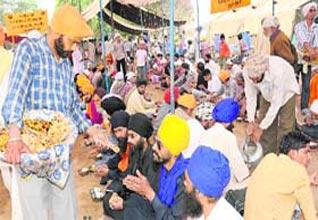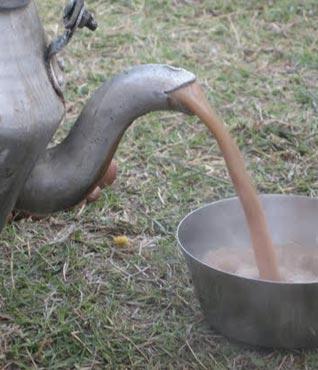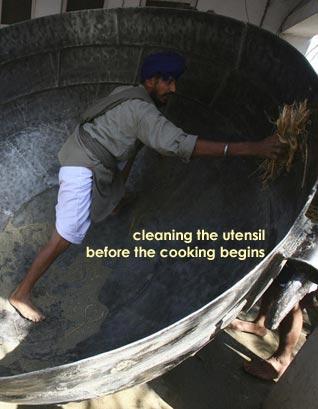Cuisine
Hola Mohalla: Feeding The Hordes
by MEGHA MANN
It began with a modest serving of tea and food in 1978. Now, the elaborate ‘Neher Wala Langar', organised as part of the six-day Hola Mohalla festival, even serves juice along with regular food items.
But, the most praiseworthy is the indomitable spirit of the villagers that has kept the annual community lunch going. Hundreds of thousands of pilgrims are served food here daily during the festival, the skyrocketing prices of vegetables, pulses and other langar ingredients notwithstanding.
Organised beside the Nangal Hydel Channel near Barapind village in Punjab, initially not many women were willing to cook, the venue being a forest area. So, men took over the job.
Today, besides people from Barapind, villagers of Beli and Falahi Kotla also serve ‘langar' round the clock during Hola Mohalla. Inspite of the high prices of vegetables and pulses, more than 15 langar organisers have been taking care of the food requirements of the hundreds of thousands of devotees en route from Ropar to Anandpur Sahib.
While ‘Neher Wala Langar' is a joint venture of three villages, the one at Alipur village is run by the local citizens themselves. Here, even fresh sugarcane juice is served.
Sewa Singh, a villager, says the langar gets around 60,000 devotees in six days. "Ours is a small village of 650 voters. All of us contribute either in money or kind. Most of us are farmers and we contribute all kinds of crops that we grow. Two years ago, we started serving sugarcane juice also to the pilgrims. Ever since, their count started growing," he said.
Notably, the State Advisory Price of sugarcane is Rs. 215 per quintal for 2011 and about 60 quintal of sugarcane is crushed daily here. Apart from the contributed sugarcane, villagers also buy it from the open market to meet the demand.
The prices of other items used to prepare the langar, like cauliflower, cabbage, pulses, garlic, etc, too are sky-high nowadays.
"The cost of the raw materials doesn't matter during seva. We don't know how, but God manages the entire funds and we serve the sangat. We have never audited our expenses for these six days, as we know our vessels will never go empty," says Teja Singh, who has been part of the langar near Punj Piara Park in Anandpur Sahib for the last over a decade.
Apart from the expensive food items, high cost and paucity of the cooking fuel is also a matter of concern. But the villagers either rope in fuel filling station owners or contribute from their spare quota of LPG cylinders. Even biomass fuel is now being used to prepare the rotis.
Conversation about this article
1: Gobinder Singh (U.S.A.), March 20, 2011, 4:31 PM.
"The cost of the raw materials doesn't matter during seva. We don't know how, but God manages the entire funds and we serve the sangat. We have never audited our expenses for these six days, as we know our vessels will never go empty ..." This is how every Sikh feels and somehow other communities still get baffled at the amount of langar Sikhs serve everywhere. What they don't know is that this is Guru Nanak's Sacha Sauda and it will keep going!






